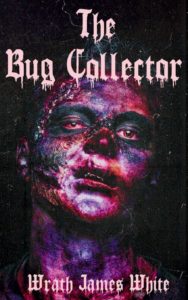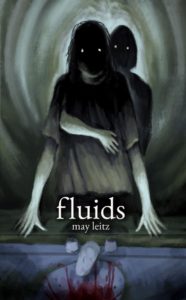Ahh, where would we be during Halloween without a good moral panic now and then? Because in some respects, that is the only way to scare seasoned horror fans. It’s a simple formula for fear: take a normie who doesn’t understand that special effects are a thing, mix that with one part idiotic police and two parts puritanical prosecutor, cut it with half a soupcon of angry online Christian moms and you find yourself worried that watching Terrifier 3 could send you to prison.
The case I want to discuss today didn’t make a huge splash when it happened in 2009, but the Remy Couture obscenity trial was a chilling attempt at censorship and moral grandstanding using a legal and judicial system so infested with idiocy that it hardly seems like it could have happened the way it did. I cannot emphasize enough how stupid the case against Remy Couture was.
Remy Couture is a French-Canadian special effects makeup artist who created two very gory films to showcase his skills. The films in question, Inner Depravity 1 and Inner Depravity 2, may strike some as disgusting,  and, to be frank, the subject matter and execution were a bit puerile (the first film opens with the silly slogan, “A mind is a terrible thing to taste”), but overall any sensible person should have been able to see that the two films were Couture featuring his work in two very extreme shorts. Both films depict the same, masked drug addict who preys on women, killing them, raping them after they are dead, and at times keeping their bodies in barrels so he can defile them again later. The second film features the same killer but this time he has an “apprentice,” a boy whose body language and appearance kind of reminded me of Cha-Ka from the 1970s television show, Land of the Lost.
and, to be frank, the subject matter and execution were a bit puerile (the first film opens with the silly slogan, “A mind is a terrible thing to taste”), but overall any sensible person should have been able to see that the two films were Couture featuring his work in two very extreme shorts. Both films depict the same, masked drug addict who preys on women, killing them, raping them after they are dead, and at times keeping their bodies in barrels so he can defile them again later. The second film features the same killer but this time he has an “apprentice,” a boy whose body language and appearance kind of reminded me of Cha-Ka from the 1970s television show, Land of the Lost.
In 2009, a German Internet user came across the videos and reported them to Interpol as depictions of genuine snuff. Evidently the German man could not read English (or French because I believe Couture’s site at the time had both languages to describe the films) and Google Translate was still pretty new, so perhaps we can understand his alarm. After all, this is hardly the first time such a thing has happened. In the 1990s, national disgrace Charlie Sheen came across a copy of one of the notorious Guinea Pig films, specifically, The Flower of Flesh and Blood, and was so convinced it portrayed genuine torture and murder that he contacted the FBI. Mistakes happen.
But surely one would expect that French Canadian law enforcement might read the description of the films before going off half-cocked and accusing him of murder, but they didn’t. Eventually the investigators were able to piece out that his films were not literal depictions of murders, and when they did they then shifted gears and Couture was accused of obscenity in the first trial of its sort in Canadian history. Ultimately in 2012, Couture won the case against him, but he had to spend $30,000 CAD to defend himself, and the Canadian tax payers had to pay a cool million for their chance to participate in a moral panic.
I had seen the two films in question before charges were brought against Couture, but I didn’t associate them with his name until I read an article about his legal woes and sought out the films in question. When I realized I had seen them before, I could hardly believe anyone was so naive and lacking in the ability to judge films using common sense and context that they could both believe the films could, in any way, depict something that actually happened, or that it would be considered obscene in a time when horror films can be very detailed in their gore.
Please do not think what follows in any way impugns Couture’s skills in his field, because he is pretty good at what he does. But it does beggar belief that anyone felt the two short films depicted actual violence or were anything worse than what one could see in the Saw franchise or in necrophilic exploitation films like Nekromantik. Human beings love them a panic and Remy Couture accidentally gave those people what they wanted – a stupid witch hunt.
I don’t want to upload the videos to this site because it is recommended that only those over the age of eighteen watch them, but if you are interested, you can find the videos here. There are enough warnings on the site that hosts them to cover their behinds and hopefully indemnify me if some middle-schooler clicks over there from my site. Both films involve rough content. Women are bound, attacked, sexually defiled, mutilated and even victims of extremely casual cannibalism. Half of the time, the brutality is so over the top that if it were not so dark it would be funny. Honestly, the little apprentice is pure comic relief for the right sort of jaded viewer (hi!).
On its face, there is no way an intellectually honest person could have believed that Couture recorded his own acts of actual depravity or that the intention behind the two films was to “corrupt morality.” ID1 literally begins with a full-scale police investigation, as cops and forensics personnel are examining the semi-nude body of a sexually violated woman whose death is later shown in graphic detail. If the murders in the film were accurate depictions of genuine murders, it should have taken no more than half an hour to run down the details of the case to determine which police jurisdiction had investigated the murder. Moreover, someone is videotaping the law enforcement investigation from multiple angles without trained investigators noticing someone using 2005 technology hovering around them in a muddy, wooded area. The video taken of the investigation clearly could not have been police video, as it is visually in keeping with the rest of Remy Couture’s style, and is identical to the style used in the later depiction of the murder in the film.
The second film, strangely, is less skilled than the first. In ID2, at about the 3:37 mark, a bound woman’s arm is cut off just above the wrist and it is clearly faked. The bleeding stump looks like something you’d see in a professional horror film from the 1980s. Again, no shade against Couture, but the only way someone could have looked at that scene and worried that it was real was someone who really hoped it was real. Couture did not have film industry money behind him as he made these shorts to showcase his talent. That there may be some elements of the films that don’t deliver perfect believablity is to be expected, and it is astounding that any law enforcement professional could have watched the film and think any of it was real. Then when Couture cuts off another limb, he cinematically films himself taking a bite and then tossing it to his little Sleestak/feral hobbit to gnaw on. The whole scene is shot to include the perspectives of Couture and the woman being killed, which points in the direction of it being staged. Additionally, all of the women portrayed in the films were actresses there on their own free will, and candid behind-the-scenes shots show them laughing and interacting with Couture.
So eventually it became clear no one was killed in either film. Unwilling to let it go and chalk up their idiocy to a mistake, the Crown decided to charge Couture with obscenity with the intent to corrupt morality. They classified the films as violent pornography with no higher artistic purpose and therefore a threat to public morality. That on its face should never have happened because Couture was clear when he posted those videos – they were essentially exhibitions of his skills as a makeup artist, not an attempt to create pornography. Imagine a Tom Savini proof-of-concept video being used to prove he wanted to corrupt morality. Think about snippets of Greg Nicotero’s work being mistaken as an attempt to prove zombie films are obscene and without artistic merit. But it was staggeringly dense to claim ID1 and ID2 sought to degrade public morality because both films are foul. The public whose morality would be challenged by either film was very small because most people who watch horror content are not taking notes. They aren’t looking at a demented drug addict wearing nasty masks and his little companion gnawing on arms and having sex with rotting corpses and thinking, “You know, working a day job and raising my kids in the suburbs is a loser’s bet. I want to take my son, force him to be a cannibal and live the life of this shambling, filthy necrophile.” Luckily the jury agreed with my assessment and found Remy Couture not guilty in spite of shrill protests from a vocal minority that if you supported Remy Couture’s right to freedom of speech and expression, then you support violence against women.
 Unfortunately, while that verdict ended the legal witch hunt against Couture, it hasn’t stopped breathlessly naive people who have no idea Google image lookup is their friend from taking stills from these two films or images from other Couture projects and insisting they depict actual victims of Satanic murder or are hijacked to use in politically charged lies.
Unfortunately, while that verdict ended the legal witch hunt against Couture, it hasn’t stopped breathlessly naive people who have no idea Google image lookup is their friend from taking stills from these two films or images from other Couture projects and insisting they depict actual victims of Satanic murder or are hijacked to use in politically charged lies.  One particular image of a woman with a crucifix impaled through her throat has been used to fan the flames of Satanic Panic or in political scapegoating. Don’t worry, the actress in the photo is very much alive, the woman whose face is presented next to the gory image is not the actress in Couture’s image, and if that woman was killed for being a Christian, a pox on everyone who demeaned her death in this manner.
One particular image of a woman with a crucifix impaled through her throat has been used to fan the flames of Satanic Panic or in political scapegoating. Don’t worry, the actress in the photo is very much alive, the woman whose face is presented next to the gory image is not the actress in Couture’s image, and if that woman was killed for being a Christian, a pox on everyone who demeaned her death in this manner.
No matter how many years pass from the massive Satanic and moral panics from the 1980s through the early 1990s, the sparks that could ignite another witch hunt are always there, burning quietly but steadily, just waiting for a loosely hinged True Believer or political/judicial official in need of a moral platform to spill the gasoline that will save no one from physical or spiritual harm but can burn Western civil rights to the ground. It seems as if Remy Couture’s career did not end due to the absolute lunacy that was unleashed on him when a German internet user had a bad night, but his legacy is still haunted by people completely misrepresenting his work as genuine atrocity, sometimes with racist implications. This particular week of Oddtober 2024 is pretty gross in terms of content, but out of all of the topics I will discuss this month, this is the grossest and the one that should scare you the most.

